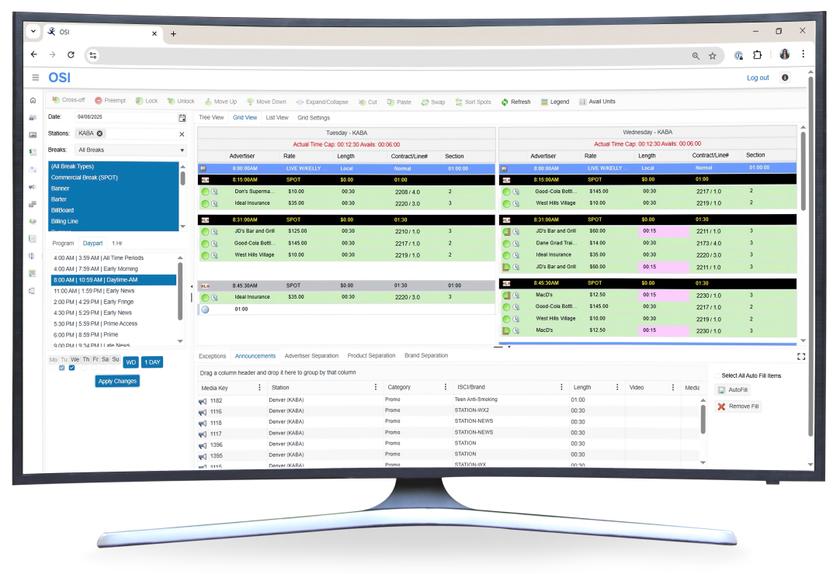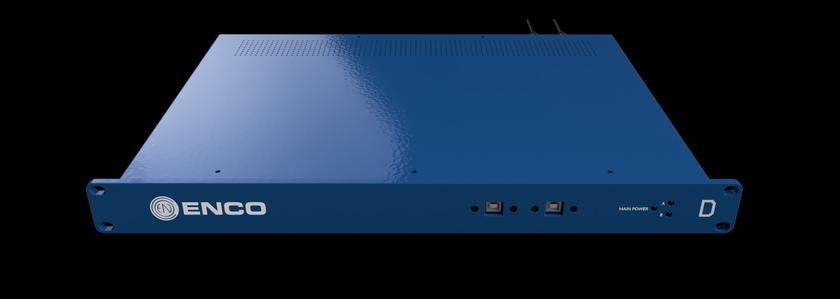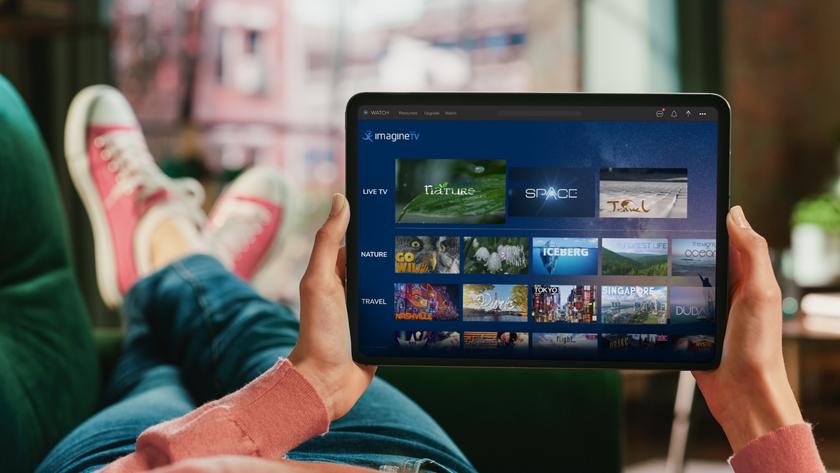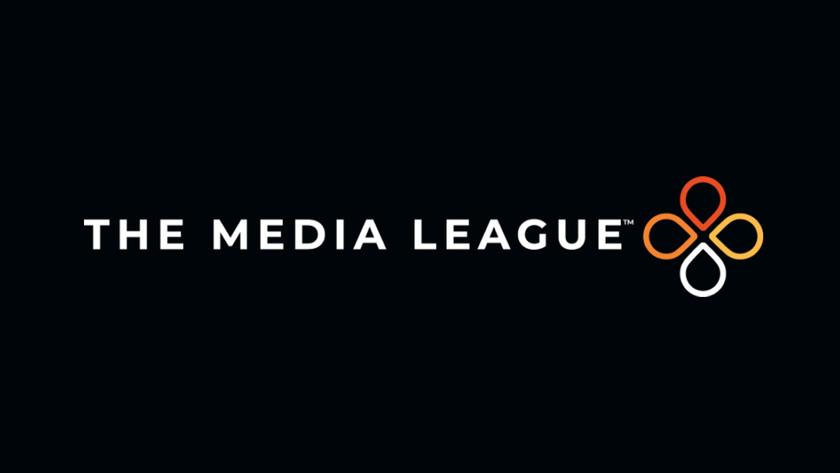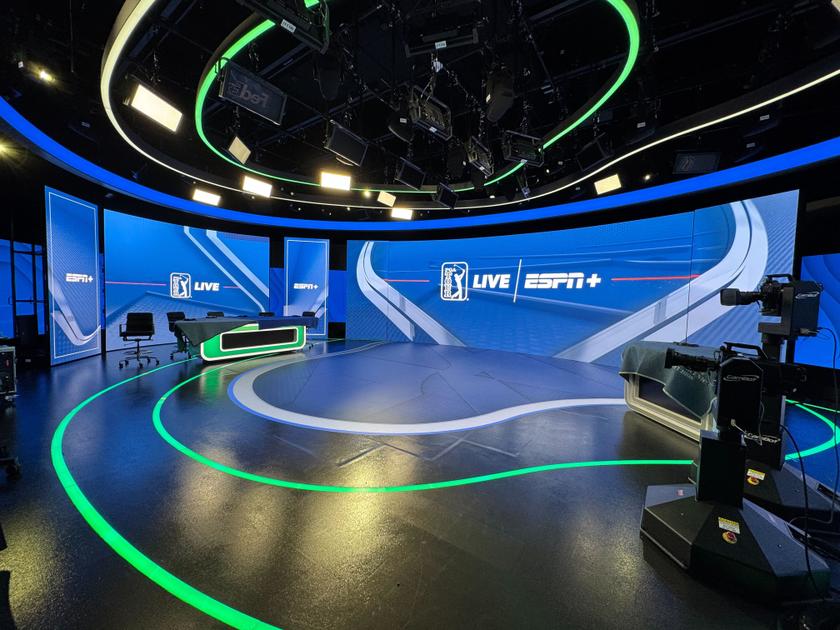FCC Says Unlicensed Devices on TV Channels Could Spur DTV Transition
The Notice of Proposed Rulemaking to allow unlicensed devices to use vacant TV channels says that these devices could increase demand for over-the-air DTV services. This is because the methods proposed for these devices to avoid interference to TV broadcasting require the unlicensed device to receive data from a TV or FM station to show what channels are available for use and determine whether a TV station is operating on a channel before allowing use of it.
The FCC says in the NPRM: "We anticipate that under this approach, manufacturers could have increased incentive to incorporate a DTV receiver into a portable computing device or laptop computer to obtain "control" signal information on channel availability from one or more local broadcast stations. This same receiver could also allow the laptop or portable computing device to display a station's DTV program service and could provide broadcasters the opportunity to offer new services to users of these devices. For example, broadcasters could offer new sports, equity market and other information services to these devices using the data capabilities of digital television. These receivers could also contribute to increasing the production and performance of DTV receivers and thereby promote the development of the economies of scale that are needed to allow the marketing of low cost DTV receivers. Further, the widespread availability of DTV receivers in portable/laptop computers could increase consumer demand for over-the-air DTV services."
RF Report for May 18 has an overview of NPRM based on the FCC News Release announced the Commissioners' decision to adopt NPRM and comments from some Commissioners concerned about the potential for interference to TV reception from unlicensed devices.
In addition to the over-the-air monitoring methods described above, the FCC NPRM said that once the location of the device was determined through a GPS unit located in the device or by a professional installer, an internal or external database could be used to determine whether the device was far enough outside the protected contours of broadcast stations to avoid causing interference to reception of the stations' signal. The FCC noted that determining usability of a channel by looking for a signal was susceptible to the "hidden node" problem, where the path between the device and the TV station was blocked, but there was no blockage between the TV station and a receiver and the receiver and the device.
While the entire NPRM (including Commissioners' comments and proposed rules) is 38 pages, the proposed amendments to Part 15 of the FCC rules takes up slightly more than two pages. Here is a summary of the rules.
To avoid interference to set-top boxes and other devices with RF outputs, TV channels 2-4 cannot be used. Operation is also not permitted on channel 37, which is reserved for radio astronomy and use by medical devices. Maximum conducted output power is limited to 1-watt peak for fixed devices and 100 mW peak for portable devices. Directional gain antennas can be used, but if the gain of the antenna exceeds 6 dBi, then the output power of the device must be reduced by the amount the antenna gain exceeds 6 dBi. Spurious emissions in any 100 kHz bandwidth outside the frequency band the device is operating in have to be at least 20 dB below that in the 100 kHz bandwidth within the operating band that contains the highest level of desired power, based on either an RF-conducted or radiated measurement. Radiated emissions outside the TV broadcast channel(s) in which the device is operating must comply with the emission limits specified in Section 15.209(a).
There are more stringent rules for fixed operation. As noted earlier, if a fixed device is not professionally installed it must include a GPS receiver that can determine its location with 10 meters and have the capability of accessing a database and computational software to determine the TV channels that are vacant at its location and limit its transmissions to only those channels. If professionally installed, "the installing party will configure the device to operate on only unused channels. The unlicensed device or its operator must periodically access a channel availability database and computational software to ensure that the channels on which the device operates remain unused."
The proposed Part 15 rules also require that portable devices "must be capable of receiving a control signal from an unlicensed transmitter, or a TV or FM broadcast station indicating the TV channel(s) that are vacant within the service area of the unlicensed transmitter, TV or FM station. The intentional radiator must transmit only on channels(s) that are designated as vacant. The intentional radiator shall not operate if no unoccupied frequency band is available within its frequency range of operation or if it does not detect any unlicensed transmitters, FM or TV broadcast stations transmitting channel availability information."
Analog TV stations have to be protected to their Grade B contour. Analog Class A, LPTV, translator and booster stations are protected to the 62 dBu/m field strength for low VHF, 68 dBu/m for high-VHF and 74 dBu/m for UHF. Digital TV stations are protected to their noise-limited threshold contour (i.e. 41 dBu/m at UHF). Digital Class A stations are protected to 43, 48 and 51 dBu/m contours for low-VHF, high-VHF and UHF, respectively. F (50, 50) propagation curves are used for analog contours and F (50, 90) for digital contours.
Desired to undesired (D/U) ratios for all analog TV (including LPTV, Class A, translators and boosters) are set at 34 dB for co-channel operation, -17 dB for upper adjacent and -14 for lower adjacent. For all digital TV stations (including digital Class A), the ratios are 23 dB co-channel, -26 dB upper adjacent and -28 dB lower adjacent. F (50,10) propagation curves are used for the co-channel ratios and F (50, 50) curves for the adjacent channel ratios, for both analog and digital. Unlicensed stations cannot use TV channels assigned to PLMRS or CMRS within 134 km of metropolitan areas in which they are in use and cannot use channels to within 131 km of metropolitan areas where the adjacent channels are used by PLMRS or CMRS. In addition, fixed unlicensed devices cannot be used on any VHF TV channels within 32 km of the border with Mexico, any UHF TV channels with 40 km of the Mexican border or any channel, VHF or UHF, within 60 km of the Canadian border.
The proposed rules require that unlicensed devices using TV channels be equipped with "a means to automatically and periodically transmit a unique identification signal. Devices must not be equipped with any controls accessible to any party, other than a professional installer, that allow selection of the transmit channel or output power. Devices must include features to ensure that only the software that was approved with a device can be loaded into a device, and the software may not allow the user to operate the device with parameters outside those that were approved. Devices must incorporate a means to detect whether tampering with the hardware or software has occurred and must not operate if tampering is detected."
For more details on the proposed rules, including exemptions for portable devices and operation on adjacent channels within the protected contour of a TV stations, refer to the proposed rules in the Notice of Proposed Rulemaking.
The NPRM seeks comment on whether measures are needed to protect wireless microphones operating on TV channels, including possibly designating one or two unused TV channels in each market for use only by wireless microphones. Comments were also sought on whether fixed devices should be allowed to operate at higher power and if so, what safeguards would be needed to protect TV reception. Should devices be required to use transmit power control and operate with the minimum power necessary to achieve reliable communication? How should professional installers be qualified? Comments have to be filed using the Electronic Comment Filing System (ECFS). You can browse comments by going to the FCC's Search for Filed Comments form and entering "04-186" in box 1, "Proceeding". You can also try this link to go direct to the comments in proceeding 04-186. Three comments were on ECFS as of May 30, 2004.
Get the TV Tech Newsletter
The professional video industry's #1 source for news, trends and product and tech information. Sign up below.
